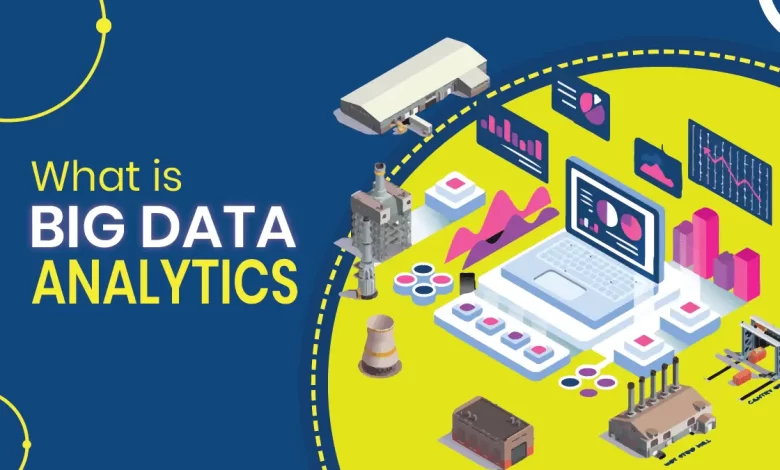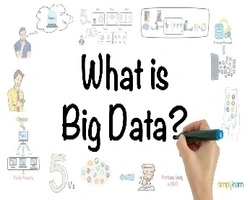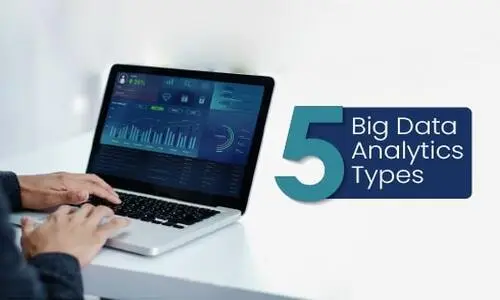What is Big Data Analytics | Career in Big Data Analytics

Big Data Analytics is a process used to extract meaningful insights, such as hidden patterns, unknown correlations, market trends and customer preferences. Big Data Analytics offers various benefits- it can be used for better decision making, preventing fraudulent activities, among other things.
Table of Contents
What is Big Data Analytics?

Big data analytics is the often complex process of examining big data to uncover information— like a hidden patterns, correlations, market trends, and customer preferences—that may help organizations make informed business decisions.
On a broader scale, data analysis technologies and techniques give organizations a way to analyze data sets and collect new information. Business intelligence (BI) queries answer fundamental questions about business operations and compliance.
Why Big Data Analytics is important?
Organizations may use big data analytics systems and software to create data-driven decisions that may improve business-related results. Benefits may involve more effective marketing, new revenue opportunities, customer personalization, and improved operational efficiency. With an effective strategy, these benefits may provide a competitive advantage over competitors.
History of big data analytics
The history of Big Data analytics can be traced back to the early days of computing, when organizations first started using computers to store and analyze large amounts of data. However, Big Data analytics didn’t really begin to take off until the late 1990s and early 2000s, as organizations increasingly turned to computers to help them process the rapidly growing amounts of data generated by their businesses. May help in understanding.
Today, Big Data Analytics has become an essential tool for organizations of all sizes in a wide range of industries. By harnessing the power of Big Data, organizations are able to gain insights into their customers, their businesses, and the world around them in ways that were not possible before.
As the field of Big Data Analytics continues to evolve, we may expect to see even more amazing and transformative applications of this technology in the years to come.
Benefits of Big data analytics
Risk Management
Use Case: Bunco de Oro, a Philippine banking company, uses Big Data analytics to identify fraudulent activities and anomalies. The organization uses it to narrow down a list of suspects or root causes of problems.
Product Development and Innovation
Use Case: Rolls-Royce, one of the largest manufacturers of jet engines for airlines and armed forces around the world, uses Big Data Analytics to analyze how efficient engine designs are and Is there any need of improvement.
Quicker and Better Decision Making Within Organizations
Use Case: Starbucks uses Big Data Analytics for strategic decision making. For example, a company leverages this to decide whether a particular location would be suitable for a new outlet. They will analyze many different factors, such as population, demographics, accessibility of the location, and more.
Improving the Customer Experience
Use Case: Delta Air Lines uses Big Data analysis to improve customer experiences. They monitor the tweets of their customers to know their experience about travel, delays etc. The airline recognizes negative tweets and does what is necessary to rectify the situation. Publicly addressing these issues and offering solutions helps the airline build good customer relations.
Different types of big data analytics
There are four types of Big Data Analytics here:

Descriptive Analytics
It summarizes past data in a form that people can easily read. It helps in generating reports like revenue, profit, sales etc. of the company. Also, it helps in tabulating social media metrics.
Diagnostic Analytics
This s done to understand what was causing the problem in the first place. Techniques such as drill-down, data mining, and data recovery are all examples of this. Organizations use diagnostic analytics because they provide deep insight into a particular problem.
Predictive Analytics
This type of analytics looks at historical and current data to make predictions for the future. Predictive Analytics uses data mining, AI, and machine learning to analyze current data and create predictions about the future. It works on predicting the trends of the customers, market trends etc.
Prescriptive Analytics
This type of analytics prescribes a solution to a specific problem. Perspectives analytics works with both descriptive and predictive analytics. Most of the time, it depends on AI and Machine Learning.
What are the uses of Big data analytics
Customer acquisition and retention
Consumer data may aid companies’ marketing efforts, which can act on trends to increase customer satisfaction.
Targeted advertising
Personalization data from sources such as past purchases, interaction patterns, and product page viewing history can help create targeted advertising campaigns that are engaging for users on an individual level and at scale
Product development
Big data analytics can provide insights to inform product feasibility, development decisions, progress measurement, and make improvements towards adapting to business customers.
Price Optimization
Retailers can opt for pricing models that use and model data from a variety of data sources to maximize revenue.
Supply chain and channel analytics
Predictive analytical models can help with preemptive replenishment, B2B supplier networks, inventory management, route optimization, and notification of potential delivery delays.
Risk Management
Big Data Analytics may identify new risks from data patterns for effective risk management strategies.
Better decision making
Insights extracted from relevant data to business users can help organizations make quicker and better decisions.
Conclusion
Big data is a game changer. Many organizations are using more analytics to drive strategic operations and provide better customer experiences. Small changes in efficiency or small savings can lead to huge gains, which is why most organizations are moving to big data.
FAQs
1. What is big data analytics?
Big data analytics is the sometimes difficult process of analyzing large amounts of data to reveal information – such as hidden patterns, correlations, market trends and consumer preferences – that can help businesses make educated business choices.
On a larger scale, data analytics tools and processes enable companies to analyze data sets and gain new insights. BI questions provide answers to fundamental questions regarding the operations and performance of the company.
2. What is the significance of big data analytics?
Big Data Analytics helps organizations harness their data and identify new opportunities. As a result, better business decisions are made, operations are more efficient, profits are higher and customers are happier.
3. How Big Data Analytics Works?
To install Gather information. Once data has been collected and saved, it must be correctly organized in order to produce reliable answers to analytical queries, especially when the data is huge and unstructured. Then, clean and analyze the data.
4. Who Makes Use of Big Data Analytics?
Industries that involve big data analytics are banking and securities, healthcare providers, communications, media and entertainment, education, government, retail and wholesale trade, manufacturing natural resources, and insurance.
5. What are the five types of big data analytics?
There are five types of big data analytics: prescriptive analytics, diagnostic analytics, cyber analytics, descriptive analytics, and predictive analytics.
6. What are the three types of big data?
Big data is classified into three types: structured data, unstructured data, and semi-structured data.
7. What are the benefits of big data?
Instead of spending a fortune on ineffective advertising, businesses can tailor products to customers based on big data. By tracking POS transactions and Internet purchases, businesses can harness big data to study consumer patterns.
8. Why do we need big data analytics?
Organizations can access their data and use big data analytics to find new possibilities. This results in wiser company decisions, more efficient operations, greater profitability and happier customers. Businesses that employ big data and advanced analytics benefit in a number of ways, including cost reduction.



